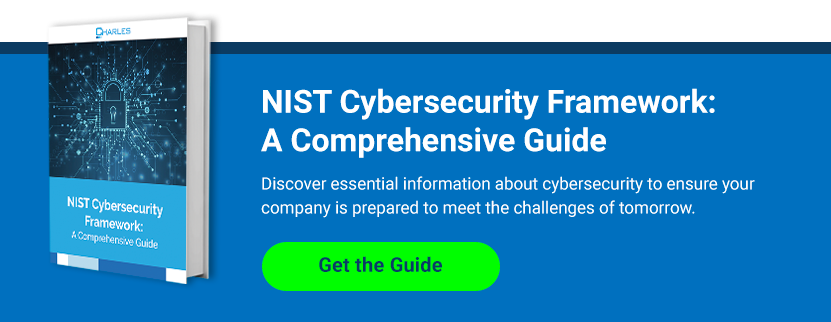There is no denying the benefits of cloud computing in today’s hyper connected age. But at the same time, this relatively new computing model presents some unique security concerns. After all, the ability to access business-critical apps and data from anywhere and on any device can also mean it is easier for malicious actors to do the same.
The NIST Cybersecurity Framework has become a gold standard in information security, and more organizations are adopting it to meet today’s demands and ensure ongoing compliance with industry regulations. While the framework does overlook some important issues regarding cloud security, such as auditing and shared responsibility, it does lay the critical foundations.
A NIST Cybersecurity Framework Overview
The NIST Cybersecurity Framework was launched in 2014 with a view to driving innovation in the critical infrastructure sector in the US. The most recent iteration, version 1.1, was released in 2018 with greater focus on protecting supply chains at scale. The framework has now been widely adopted across all industry sectors, despite its original focus.
Adherence to the NIST framework is a major step forward towards achieving a higher security maturity. The NIST also regularly publishes and re-releases supporting documents, including guidance specific to cloud security. Business leaders should familiarize themselves with these in order to achieve closer alignment with the needs of IT and security.
#1. Manage risk at scale
One of the main goals of the NIST Cybersecurity Framework is to promote alignment between business and cybersecurity. The idea is to promote innovation without adding risk. Managing risk across modern hybrid and multi-cloud environments requires a consolidated approach in which the entire risk lifecycle is considered. This is why the framework identifies five function areas – identify, protect, detect, respond, and recover.
#2. Proactively deal with vulnerabilities
NIST CSF vulnerability management shifts the focus from the reactive security measures of old to proactive ones. This is essential now that some of the most prolific threats are unknown and entirely new, which means they cannot be hindered by traditional reactive solutions such as antivirus software.
The framework is built on an assumption that all business leaders should be on board with – that it is not a matter of if an attack will happen, but when it will happen. In other words, it is impossible to prevent all attacks, hence the need for a proper response and recovery strategy.
#3. Secure internal and external infrastructure
The first version of the NIST CSF was released when cloud computing was in its infancy and had yet to be widely adopted across all industries. The latest edition, along with the supporting documentation from NIST, also provides guidance for external cloud infrastructure.
However, most organizations still rely heavily on internal infrastructure, including networking hardware and endpoints. These need protecting just as they always did. Compliance with the framework helps secure both internal and external infrastructure, whereas many competing frameworks only focus on one or the other.
#4. Meet the demands of regulatory compliance
The NIST Cybersecurity Framework does not exist in a bubble, and it was never intended to work alone. In fact, it serves as the basis of many industry-specific frameworks and regulatory regimes. As such, achieving compliance takes organizations a big step closer towards HIPAA and FISMA compliance. Organizations in the defense industrial base also need to comply with the framework in order to meet higher security maturity levels in the CMMC model.
#5. Attract high-value clients
Just like the framework itself, cybersecurity should not live in a bubble. Instead, it needs to be deeply integrated with your broader digital strategy. Far from just being a necessary evil, it is now a crucial part of a company’s value proposition. Especially in the B2B sector, achieving compliance with the NIST CSF translates into high-value business opportunities as well as the chance to enter new markets. In many sectors, potential clients will ask outright if you are fully in compliance with the framework. How you answer that question means the difference between whether or not you will earn that client’s business.
Charles IT helps businesses scale innovation without adding risk. We offer you a guiding hand by walking you through every step implementing the NIST Cybersecurity Framework. Call us today to schedule your first consultation!





